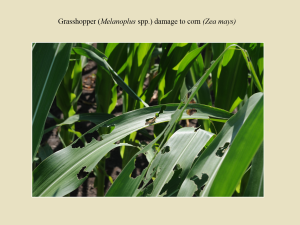Grasshopper
go.ncsu.edu/readext?898255
en Español / em Português
El inglés es el idioma de control de esta página. En la medida en que haya algún conflicto entre la traducción al inglés y la traducción, el inglés prevalece.
Al hacer clic en el enlace de traducción se activa un servicio de traducción gratuito para convertir la página al español. Al igual que con cualquier traducción por Internet, la conversión no es sensible al contexto y puede que no traduzca el texto en su significado original. NC State Extension no garantiza la exactitud del texto traducido. Por favor, tenga en cuenta que algunas aplicaciones y/o servicios pueden no funcionar como se espera cuando se traducen.
Português
Inglês é o idioma de controle desta página. Na medida que haja algum conflito entre o texto original em Inglês e a tradução, o Inglês prevalece.
Ao clicar no link de tradução, um serviço gratuito de tradução será ativado para converter a página para o Português. Como em qualquer tradução pela internet, a conversão não é sensivel ao contexto e pode não ocorrer a tradução para o significado orginal. O serviço de Extensão da Carolina do Norte (NC State Extension) não garante a exatidão do texto traduzido. Por favor, observe que algumas funções ou serviços podem não funcionar como esperado após a tradução.
English
English is the controlling language of this page. To the extent there is any conflict between the English text and the translation, English controls.
Clicking on the translation link activates a free translation service to convert the page to Spanish. As with any Internet translation, the conversion is not context-sensitive and may not translate the text to its original meaning. NC State Extension does not guarantee the accuracy of the translated text. Please note that some applications and/or services may not function as expected when translated.
Collapse ▲
Grasshoppers (Melanoplus spp.) feed on a wide variety of plants and can be pests of corn. Grasshoppers pass the winter as egg masses that were deposited about one inch below the ground surface the previous fall. Eggs hatch in May and into June. Because the soil-born eggs are destroyed by fall and spring tillage grasshopper survival is greatest in no-tillage situations, along field margins, and in other undisturbed land away from fields (e.g. in pastures). As the grasshoppers hatch, nymphs first remain near the site of hatching but slowly spread as they get larger. Winged adults develop by mid-summer and spread across the landscape. In most cases grasshoppers move into corn fields from edges bordering undisturbed areas and also show some movement in and out of fields on a daily basis. See scouting guidelines for mid-season insects. In the field grasshoppers feed on leaves, silks, and ear tips. In years of high grasshopper populations, damage can spread far into and even completely across fields, although this is unusual. Populations in corn are often much higher following drought years and when corn is no-tillage planted into soil containing lots of eggs (e.g. killed pasture, lespedeza, or alfalfa fields).
 No specific management strategy for preventing grasshoppers is recommended as they are only sporadic pests. Insecticides are sometimes employed to reduce populations and are often applied as spot treatments along field margins and headlands. To determine the need for treatment, defoliation should be estimated; a 5% yield loss potential will normally justify treatment. In addition to the defoliation estimate, a survey for the presence of grasshoppers and the extent of their movement will help estimate the potential for further damage and the possibility for spot treatment.
No specific management strategy for preventing grasshoppers is recommended as they are only sporadic pests. Insecticides are sometimes employed to reduce populations and are often applied as spot treatments along field margins and headlands. To determine the need for treatment, defoliation should be estimated; a 5% yield loss potential will normally justify treatment. In addition to the defoliation estimate, a survey for the presence of grasshoppers and the extent of their movement will help estimate the potential for further damage and the possibility for spot treatment.


